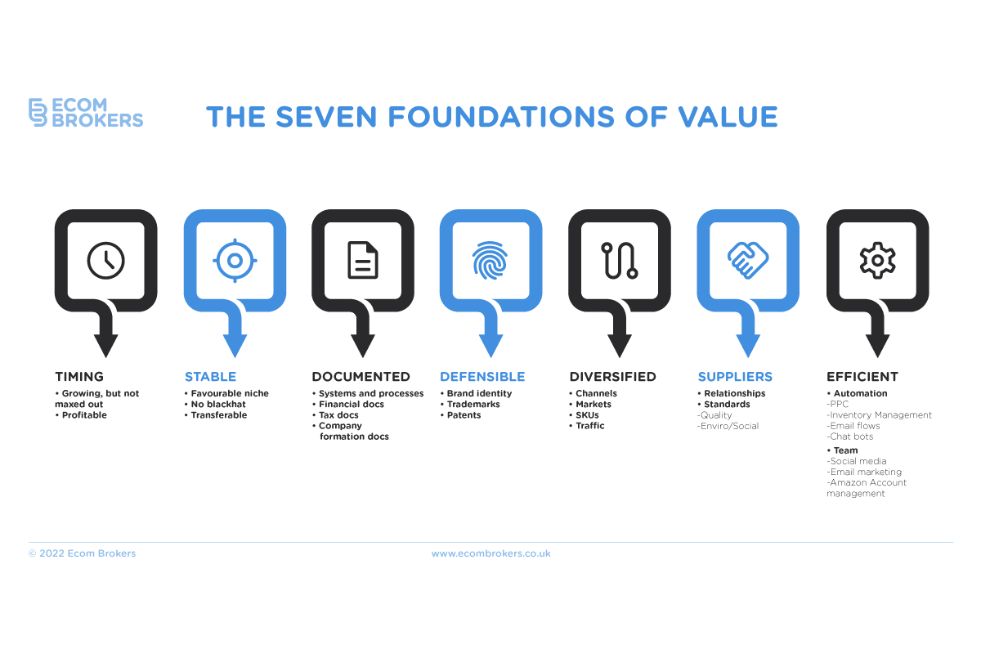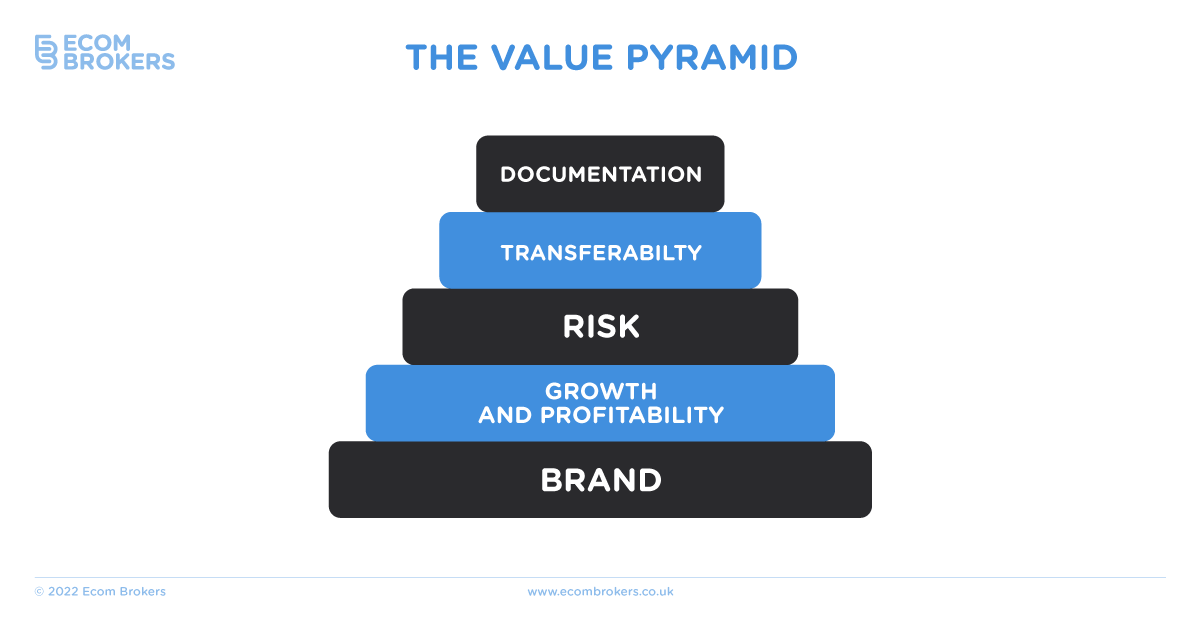
3 Steps To An Amazon Business Exit
In this article, we’re going to reveal the 3 key steps to a clean Amazon business exit.
Creating and launching an Amazon business is super exciting. The world is your oyster, there are profits to be made and a lot of fun to be had. It’s a real learning curve, too.
But what about exiting an Amazon business?
Exiting an Amazon business isn’t something many of us think about when we first launch our store. Heck, it’s not often something we think about even as we’re in the midst of our venture. But everything comes to an end, and to ensure your hard work doesn’t go to waste, it’s really important that you exit your business the right way.
It’s not easy, yet many entrepreneurs take the easy route of allowing their businesses to just wither and die. But an Amazon business is a super saleable asset that you need to prime for the market if you’re to retire or move on happily.
But first …
What Is An Exit Plan?
An exit plan can sound really downbeat because it’s so final. It’s essentially planning for the end and, to use an analogy, it can sound like you’re essentially planning your own business funeral.
But it doesn’t have to be so morbid, and exit planning is just good sense.
See, all business owners at some point have to leave. It’s life. You create a business, you launch it, you succeed at it – and then you move on. And with an exit plan, you can move on your terms.
That said, an exit plan isn’t there to pretty up a corpse. If your business is failing, an exit plan won’t help you make it more saleable. Rather, an exit plan is something you conceive way in advance of selling your business so that you put more muscle into it.
In this sense, you could even call it pre-exit planning because it involves you spending a lot of time getting your business in order so that it’s attractive to more buyers. This could mean improving its SEO, marketing, its customer service and so on.
That might already sound like a lot of work, but that’s the point. With good planning, you can make a good exit.
On the other hand, if you’re not bothered about how much you sell your Amazon business for, you could rush things through and go ahead without an exit plan. But won’t you be a little downhearted that all those years of blood, sweat and tears were for nothing? I know I would be.
With that all said, let’s now take a look at the 3 steps to an Amazon business exit.
Set Some Goals
Exit plans can’t be done on a wing and a prayer. They require time, dedication, patience – and structure.
Structure comes in the form of goals. To understand what your goals are, you need to answer some questions.
For example, what sort of price would you be happy to sell your business for right now? What does your preferred buyer look like?
And – really importantly – when do you want to sell your business?
Putting a timeline on things is key, and you can’t be ultra vague with this one. For instance, you can’t say “I’d like to sell it within two years.” It’s too vague. It’s much better to be more exact with your dates. “I want to exit my business by August 2022” sounds good, and you could also add “and I want to sell it for $5,000,000.”
That’s a goal that is specific, measurable, attainable and realistic. It’s also got a deadline. In other words, it’s what is known as a SMART goal. And it’s necessary to create SMART goals if you’re to get the sale you want, when you want.
Assess Your Resources
The next thing to do is to take a look at your resources. How do these measure up with your goals?
Let’s imagine you want to make $5,000,000 from your Amazon sale. If so, what sort of money is your store generating at the moment? If it’s just $2,000,000 at the moment, you still need to find an extra $3,000,000 within the next few years.
These numbers aren’t meant to dishearten you by the way. Instead, they’re meant to enlighten you so that you know what you need to do in order to get to your magical $5,000,000 number.
It’s a good idea at this stage to liaise with an accountant or broker (or even just a financial planner) so that you know what you need to do in order to improve your profits quicker.
Employ Value Drivers
“Okay sounds great. But – really – how do I boost my profits?”
If you can boost your profits now, the value of your business will increase. This means it’s more saleable, and you’ll get a better price for it.
In order to grow the cash value of your business, you need to use value drivers during your exit plan.
What are your value drivers? There are three of them”
- Improved internal operations
- Diversified company
- Increased business transferability
Improved internal operations
Let’s imagine you’re not an entrepreneur, but a farmer instead. You’re looking to buy a new barn. As such, are you looking at barns that are only semi-functional? Or do you want a fully functional barn that’s just been given a makeover with a brand new lick of paint?
You’ll go for the latter one, of course. Naturally.
And guess what? Whilst your potential buyers aren’t farmers, they’ll still be looking for the same thing from your Amazon business. They want one that looks good, and is fully functional.
This also means that they don’t want to spend their time and their money improving your internal operations. If you’ve got an old operating system that you know needs to be updated or replaced altogether, it’s much better than you do this as part of your exit plan.
Solid operations simply make your Amazon business more appealing, more valuable – and therefore more saleable. Remember, buyers want a quick return on their investment. If they have to waste time fixing your internal operations, that doesn’t represent a quick return at all.
Diversified company
Take a look at your current buyers and suppliers. How many of them are there? One? Two? Three? More than three?
If you’re using just a very small pool, the value of your business decreases.
Why?
Because you’re too reliant on just a minute group of customers.
Let’s say that one of them shuts down their operations. All of a sudden, you’ve got even fewer buyers and suppliers. It’s hardly attractive to potential buyers of your company.
It’s much smarter to widen your scope by working with a large number of clients. Diversification is, indeed, one of the most effective ways of safeguarding the future of your business, regardless of your niche.
Throughout your exit plan, you need to look at different ways you can reach new audiences. Who buys your products? Diversify your audience.
It’s the same with your suppliers and vendors as well. Look at ways you can shake things up with them so that you’re not relying on one or two.
Increased business transferability
Lastly, a crucial part of your Amazon business exit is making sure your business is easy to transfer.
Look at it this way. Your Amazon business is, of course, your business. But if you’re the superstar that is key to its success – if, indeed, it’s very livelihood hinges on you and you alone – it means that it isn’t easily transferable.
The problem a lot of Amazon business owners have is that they’re the type of entrepreneurs who are literally in charge of everything. This means that their businesses are not transferable.
I remember a time when I was speaking to the owner of a SaaS business who was looking to sell it. A major problem I saw straight away was that he was also the product developer as well. As such, his business was unsaleable. Nobody wanted to buy it because they knew they couldn’t transfer it without the owner.
Remember that buyers don’t want disruptions to their cash flow. But if you’re the centre of your business, cash flow will halt as soon as you pack your bags. That’s just the way it is.
So what can you do about this?
The main thing is to put in place some management structure. This will give your business the support it needs to make it transferable.
Take a closer look at your operations and find a way of making them more easily transferable. Ask yourself, “If I took a week off from my business, how will that affect cash flow?” If it seriously affects cash flow, it means you’ve got some work to do.
Amazon Business Exit Plan: Mistakes To Avoid
The thing with an exit plan is that you can’t plan everything. Something could pop up that you weren’t expecting, and it can be a bit of a killer.
However, it can at least be much less of a killer if you implement a good exit plan beforehand that covers as many bases as possible.
There are two key mistakes that you should seek to avoid with your Amazon business exit plan. In this section, we’ll be taking a look at what these are, as well as what you can do to swerve them.
Having No Goal
If you want a deal to die, or if you want to find the quickest way of ensuring you don’t get what you want out of a deal, go into it without a goal.
Goals are what give us direction in life – as well as direction when it comes to selling our business.
Ask yourself a few questions about what you want to get out of this sale, and why you’re making it. Are you looking to go into retirement? And how much cash do you want to raise from the sale?
Hell, how much cash do you need to make in order to feel good about things?
I remember speaking to an Amazon business owner a few years back who was planning to sell his business before he realised that the going rate at the time was nowhere near what he wanted. So, he pulled out.
There are two problems with doing this. One, you’re going to annoy any potential buyers who thought they had a deal. Two, you’re going to make it hard on yourself to re-enter the market at a later date.
Overinflated Values
If someone has never run a business before, they likely have no idea how much hard work has gone into it. It’s not their fault – they just haven’t witnessed first-hand what running a business is all about.
A business isn’t just a word or a fancy storefront. A hell of a lot of hard work goes on behind the scenes to ensure a business is successful. For that reason, a business is essentially the end result of a lot of hard work – blood, sweat, tears, the lot of it.
The problem here, though, is that because a person has put so much of their life into building their business from the ground up, they tend to overvalue it.
It’s hardly surprising. For many of us, our business is our baby whom we’ve raised since birth. We love it, care for it and we feel we know what it’s really worth.
And subconsciously, we might price it super high because we don’t really want someone to buy it. So we overprice it.
And while it’s easy to get a “hunch” that our business is worth, say, $10,000,000, it’s only a hunch, a feeling. It’s much better to take a proper look at the numbers in order to get a true valuation of your business.
Final Tips
An exit strategy is something all Amazon businesses need to implement. As well as the tactics listed above, let’s take a look at some final tips that will help you ) get the money you want out of this sale and b) ensure the whole process is as hassle-free as possible.
Consider Selling To Someone You Know
Ever heard the phrase “keep it in the family”?
While that shouldn’t apply to everything, it’s useful when it applies to business. If you sell your business to someone you’re on super good terms with, such as a member of your family, you will definitely make the transition smoother. Not just that, but it could also mean you get to retain an interest in the business, too (should you want that).
On the other hand, if a family member or close friend doesn’t have the necessary skills, this is a route you should avoid.
Document Your Processes
Yes, documenting your processes can be a real pain in the ass, but it will make your business more appealing to potential buyers.
How so?
Look at it like this: Imagine if you’re the type of business owner who just gets stuff done without writing down your processes. This means you’re going to have to spend a fair amount of time showing any potential buyer who your Amazon business functions daily.
Not just that, but you might have to actually train them. That’s going to take more time.
What Are You Going To Do Next?
Something some of us don’t think about when we plan an Amazon business exit is what we’re going to do next.
Just ask yourself what you’re going to do after you’ve sold your business. What are your plans?
This is a key question because the answer will likely dictate whether or not you sign a non-compete. And if you do, will it be limited?
Most buyers will ask you to sign a non-compete, but you need to know what your next move is before you sign it. Be upfront about what you intend to do next, as this will benefit the discussions.
Conclusion
If you haven’t created an Amazon business exit plan but you’re thinking of selling your business soon, today is the day to make a start.
Use the tips in this article to not only plan your exit but also ensure you get the price your hard work deserves.
Want us to help you? Just fill in this form, and we’ll be in touch. No obligation, no hard sell.
Ready to sell your business for the best possible price? Click below to get started. No obligation, no hard sell. Just solid, professional advice.









